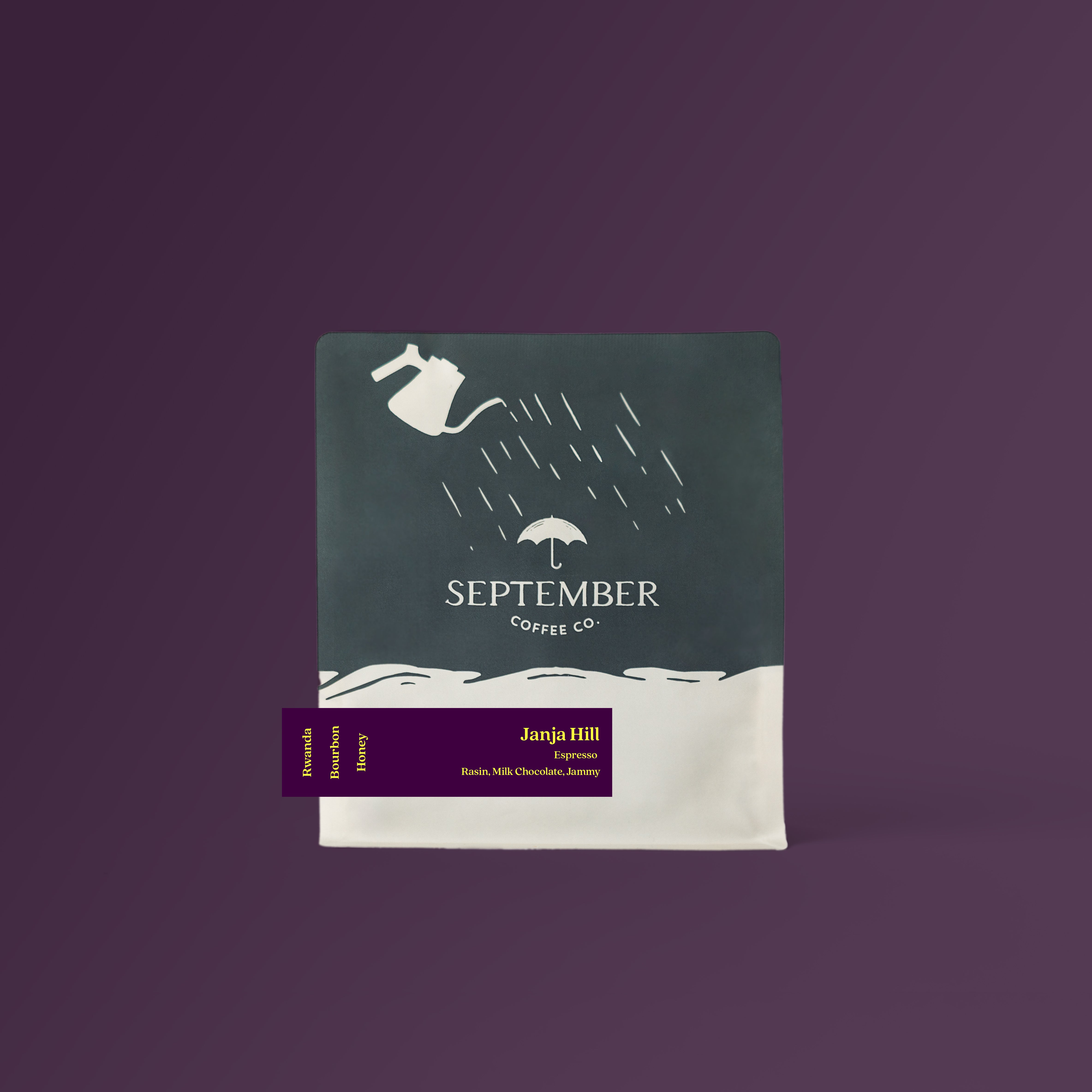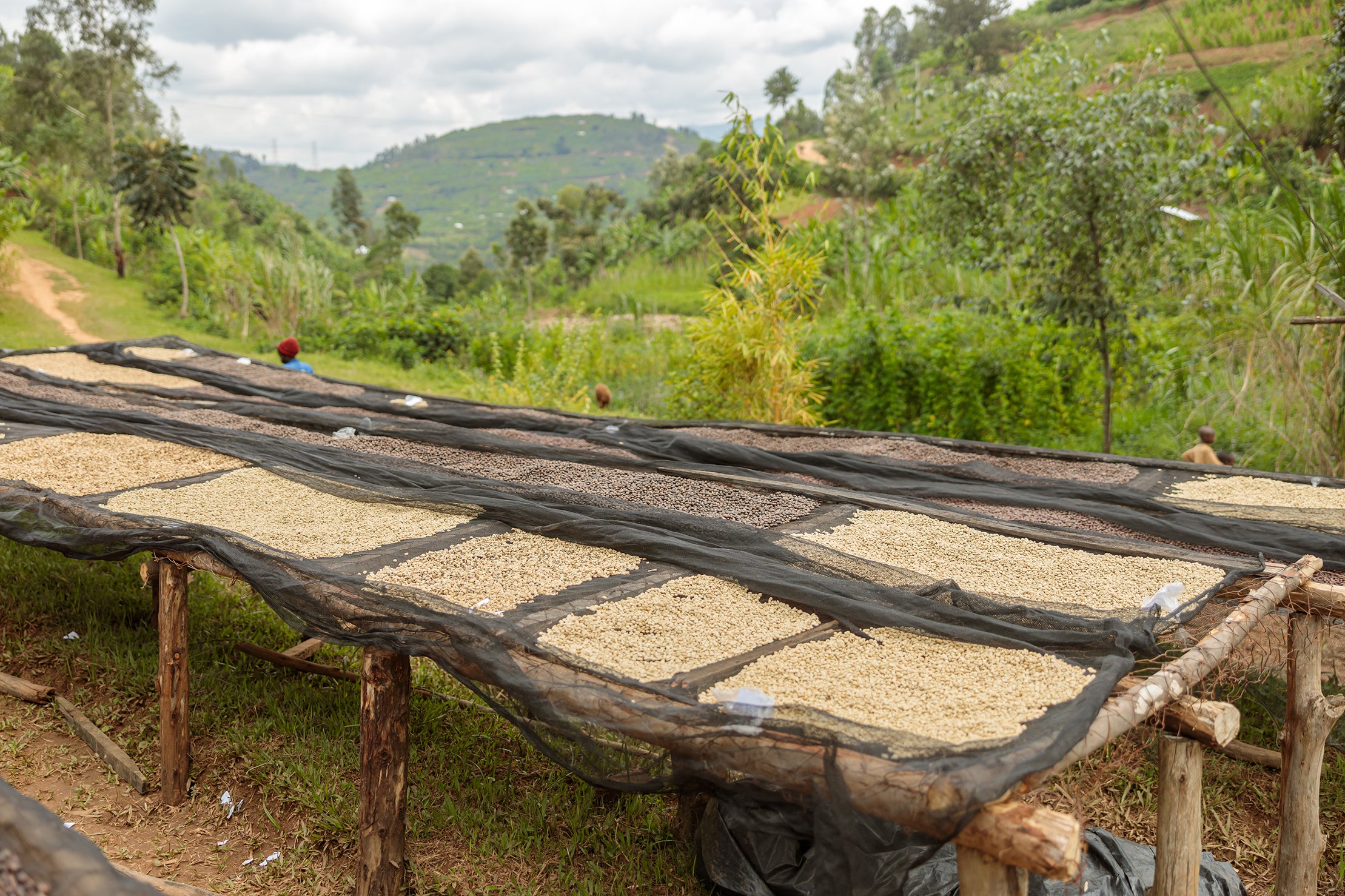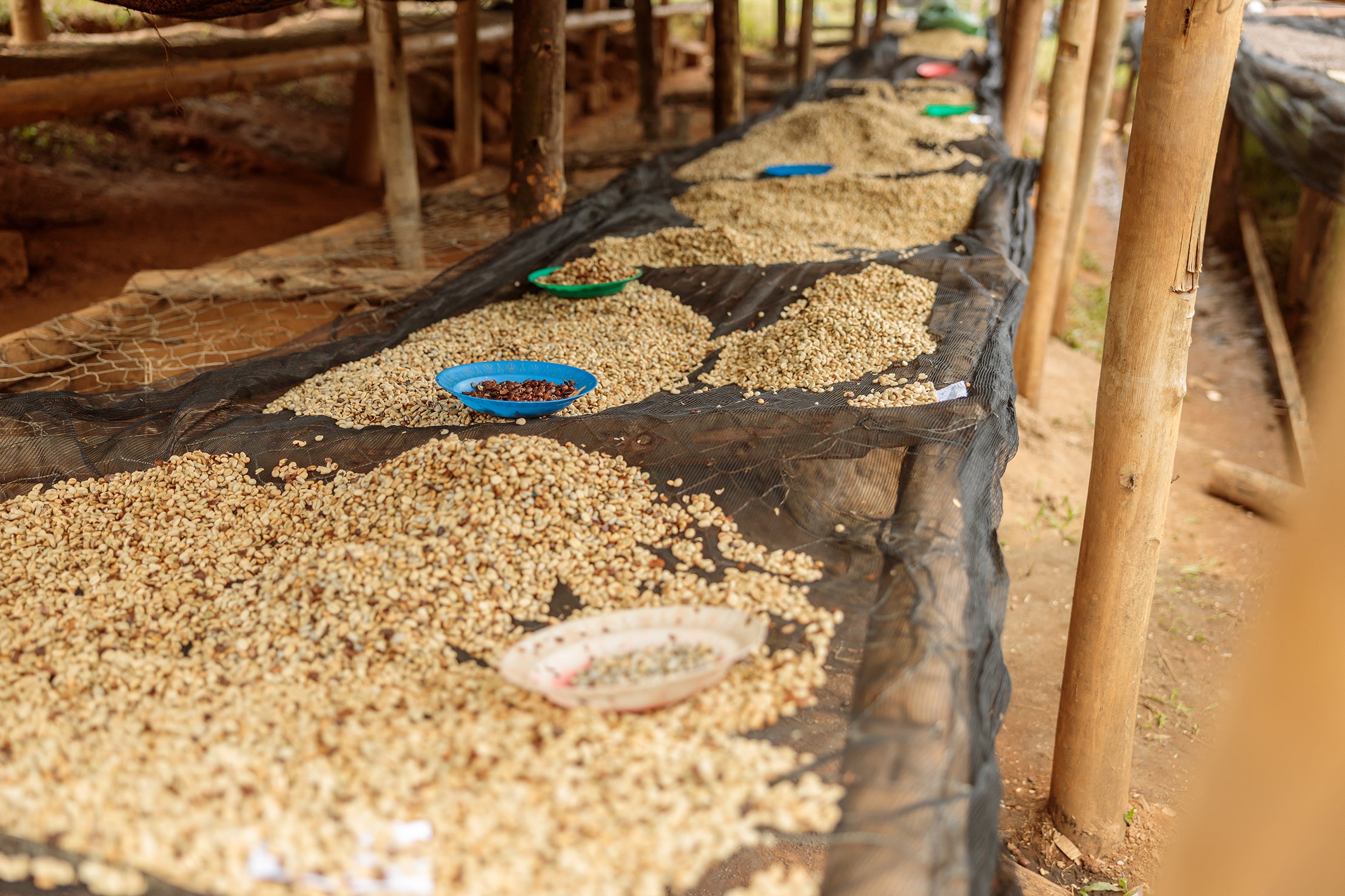


Janja Hill - Rwanda
Our third time featuring Janja Hill, and our fourth feature from the Muzo washing station. This lot is a honey process bourbon with deep jammy and milk chocolate sweetness. This is an espresso profile.
250G
Janja Hill - Rwanda
September Coffee Roastery
119 Iber Road
Unit 9
Ottawa ON K2S 1E7
Canada
- Variety: Bourbon
- Country: Rwanda
- Region: Gakenke District
- Process: Honey
- Altitude: 1900 MASL
- Roast Level: Medium-Light
 In the cup
In the cup
In the cup we get a profile of deep jammy fruits and milk chocolate sweetness. This is an espresso profile with a long finish and a creamy body.
 Funky
Funky
 Experimental
Experimental
 About The Producer
About The Producer
Muzo CWS is nestled into the crevices of rolling hills near the heart of Rwanda. This station is the smallest in the Baho collection, and is near and dear to Emmanuel as the source of some of his most beautiful coffees. Average temperatures here are higher and the rainfall is lower, with altitudes that top out at a soaring 2100masl. All of these factors likely play a part in the intensely sweet and tropical fruit flavoured coffees that come through the stations. Here’s some words from Emmanuel on the goal behind the Janja Hill group: “Janja Hill is a potential hill for coffee of high quality with the altitude above 1900m. Farms are located almost in same conditions and we think, processing this coffee as same hill (known and identified farmers) will help us to clearly identify the profile, characteristics and other special attributes that we think this coffee may present. We will keep processing this coffee separately and we hope to promote it with our buyers."
 Variety
Variety
Bourbon is the most famous of the Bourbon-descended varieties. It is a tall variety characterized by relatively low production, susceptibility to the major diseases, and excellent cup quality. French missionaries introduced Bourbon from Yemen to Bourbon Island, giving it the name it has today—in the early 1700s. Until the mid-19th century, Bourbon did not leave the island. But beginning in the mid-1800s, the variety spread to new parts of the world as the missionaries moved to establish footholds in Africa and the Americas. The Bourbon variety was introduced to Brazil around 1860, and from there rapidly spread north into other parts of South and Central America, where it is still cultivated today. Here it became mixed with other Bourbon-related varieties, introduced from India as well as Ethiopian landraces. Nowadays, there are many Bourbon-like varieties found in East Africa, but none exactly match the distinct Bourbon variety that can be found in Latin America. Today in Latin America, Bourbon itself has largely been replaced by varieties that descend from it (notably including Caturra, Catuai, and Mundo Novo), although Bourbon itself it is still cultivated in El Salvador, Guatemala, Honduras, and Peru.
